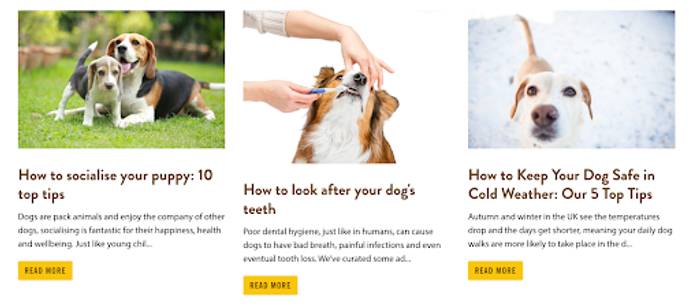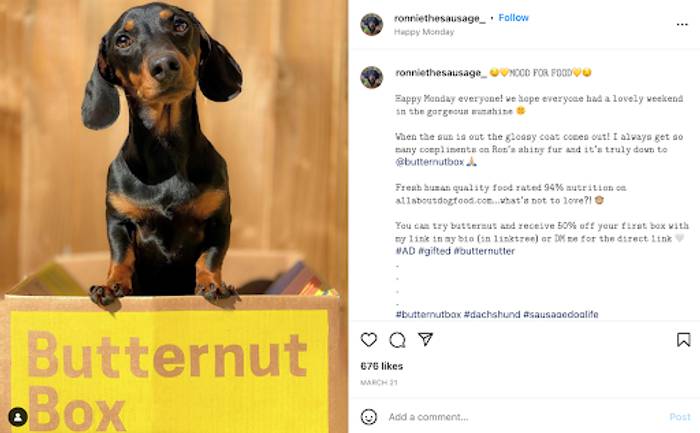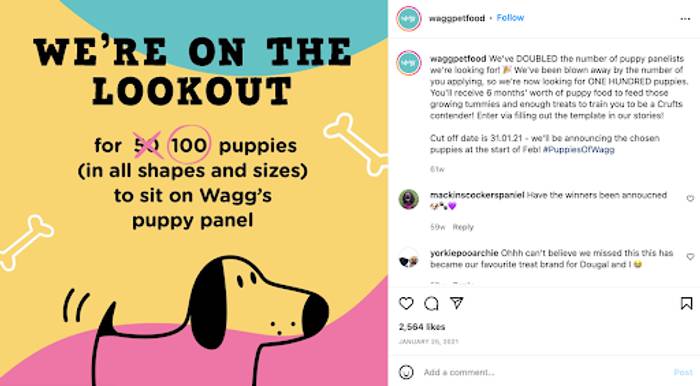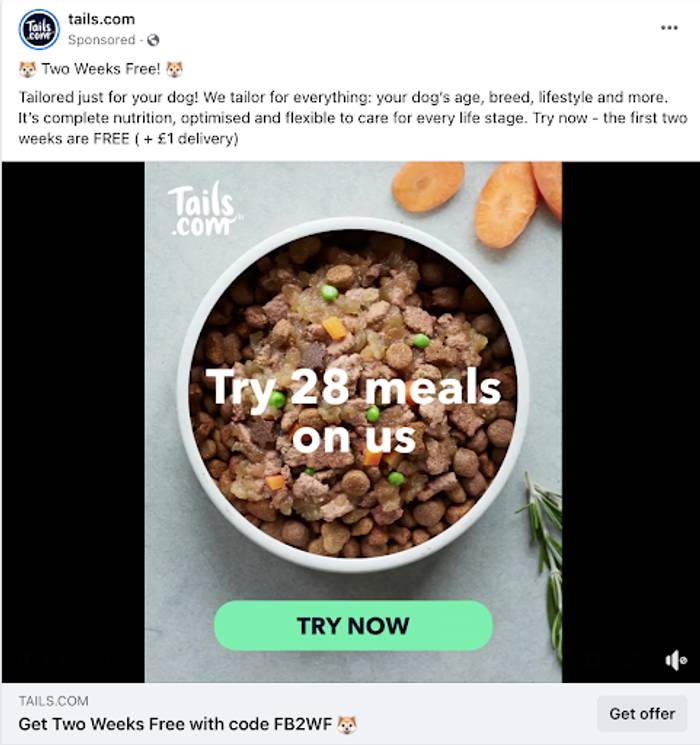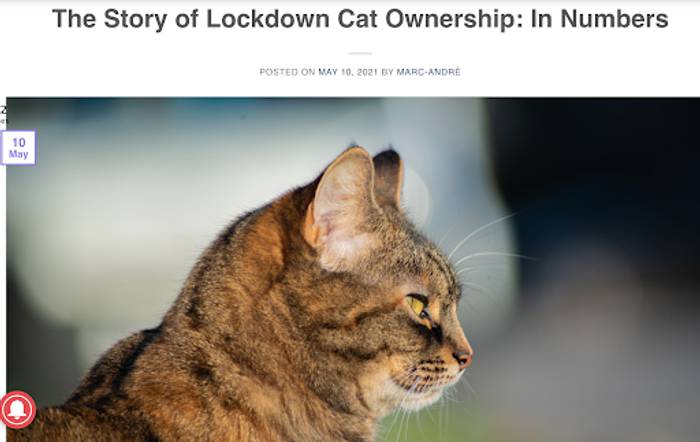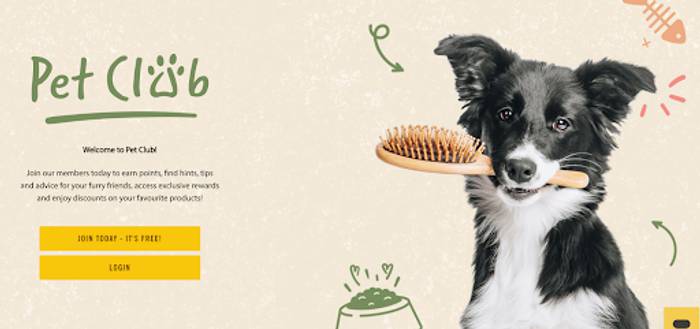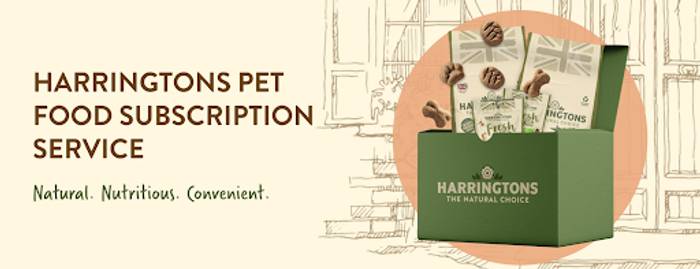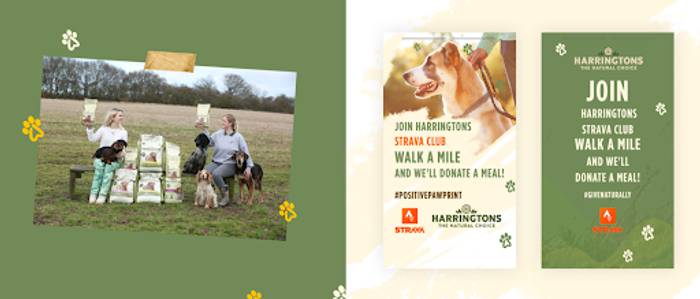As the saying goes, dogs really are man’s (and woman’s) best friend.
Last year, it was estimated that there were 12 million pooches living in homes across the UK. In fact, a whopping 59% of UK households own a pet, whether that’s a dog, cat, bird, rabbit or any other household animal. So, it comes as no surprise that globally the pet care industry is worth $261 billion in 2022, with the UK dominating the European market value in 2020.
Now, as you can imagine, it can be ruff to stand out from the crowd when it comes to marketing to pet owners. But, we’re here to help! Here at Extreme, we have years of experience working with a multitude of different pet brands. From our learnings, we’ve pulled together a guide on how you can capture the attention of dog owners and cat lovers across the country, converting them into loyal customers for years to come.
10 marketing tactics that should be part of your strategy as a pet business owner
From creating content on your blog to implementing strategic, creative paid media campaigns, fortunately there's no shortage of digital marketing levers to pull for getting your brand under the nose of dogs and owners!
1. Create a content hub that answers questions
With an abundance of answers at their fingertips, pet owners are more likely to turn to Google to ask a question about their furry companion than they are to speak to their vet, so a strong content marketing strategy is key for any pet brand, no matter what you sell.
Start with your frequently asked questions and cross reference these with keyword research to build a list of topics you should cover, taking into account seasonality and who you need as a voice of authority to contribute to your blogs. From pet nutritionists to vets, having experts onside to help you create high quality content will not only help gain the trust of your customers, it will also contribute to ranking higher on Google search results.
Once you’ve done your research, you can draw up a plan with content for every month of the year, which can also be shared beyond your blog on social media, through emails, and as hooks for your Digital PR. Aligning your content strategy with your wider marketing activity is key in amplifying your messaging, helping to position you as experts in the world of pets and getting you in front of new, potential and existing customers in search of answers.
2. Nurture customers and collect first party data through email workflows
Dog owners alone in Britain are prepared to spend almost £250 a month on their four-legged friends, so email marketing should be a no-brainer for pet companies. It’s the perfect platform to nurture customers into making a purchase, share relevant advice and information with them, incentivise repeat custom and collect first-part data.
While social media platforms like Facebook and Instagram are beginning to lose the ability to be hyper-targeted, email marketing still has the power to be tailored to your audiences.
Through a behavioural email platform like Klavyio or Drip, you can find out more about your newsletter subscribers, website visitors and customers to create audience segments based on the data you collect, resulting in email campaigns that suit their exact needs and preferences.
For example, if you’re a pet brand selling dog shampoo and you know that Bear the Cockapoo is turning one next month, you could send out an email that not only talks about a Doodle specific shampoo, but also offer a special birthday discount just for Bear. Taking the time to create personalised emails and offers is a great way to drive traffic to your website and ultimately grow sales.
3. Tell your story through creator and influencer partnerships
We live in a world where simply telling your story is no longer enough. In 2022, you shouldn’t just be carving out a budget for media spend, you need a creator and influencer pot too, so you can avoid being the runt of the litter.
Before you start, you should consider who you want to get involved and how. The lines between influencers and creators are beginning to blur, but in terms of defining the differences; influencers are followed for lifestyle factors whereas creators are followed for their creativity in content creation. Both are extremely valuable and can enhance your marketing strategy tenfold.
On Instagram, brands are increasingly using the paid partnership tag to use the influencers platform and post in their own advertising, which has added benefits for both the brand and the influencer. Whereas on TikTok, you’ll often find that creators are onboarded to create content that brands can use in their organic strategy as well as in their paid ads.
4. Build a social community you can rely on
Your social media community is one of your most valuable assets, and often many brands miss a trick with them.
Learning about your customers can provide you with a wealth of insights and information you can use to help shape how your brand grows, and your social community should be the first place you turn to. From Instagram polls and quizzes, to TikTok comments and duets - the social platforms are making it easier than ever before to have conversations and interactions with your biggest spenders, and you should be making the most of it!
Just like creators and influencers, your community has the ability to influence their peers, both online and offline. If your budgets can’t quite stretch to multiple paid partnerships, why not start with your existing customers who already advocate for you and your brand to amplify their voices and turn them into your own army of brand ambassadors?
To get people excited about being brand ambassadors, think about creative ways you can onboard them. For example, for Wagg we launched a Puppy Panel campaign on Instagram to recruit new brand ambassadors to be the first to try new products, gain exclusive discounts and feature across Wagg’s social channels.
5. Reach your audiences with social media ads
An organic social strategy isn’t enough in 2022, you need a paid strategy to compliment, amplify and strengthen your social media efforts. Traditionally, social media was seen as the channel to drive awareness, but the digital landscape has transformed and accelerated over the past couple of years. The sales funnel is no longer linear (we call it The Messy Hexagon) and social is now a channel where consumers discover, browse and buy, in whatever order suits them.
So, when it comes to social media ads, start with asking yourself, where is your audience? There’s no point advertising on a channel that your main consumer isn’t active on. Once you’ve learnt that, then think about what you want to achieve. Are you driving awareness of a new product, do you want new newsletter subscribers, is website traffic important to you, or do you simply just want sales?
Narrowing down your objectives will help you to build a picture of your campaign structure, but we’d argue that’s not the most important part. You should be investing time into your creative, copy and landing page, because as targeting options become more limited, you’ve got to rely on your creative to stop the scroll and make people click, and your landing page to make people convert.
6. Catch owners while they’re searching with paid media
Dog owners in Britain aren’t afraid to treat their pups, with an average monthly spend of £240, so to ensure they’re spending their cash with your brand, you need to be in front of them when they’re searching for their desired product. You can do this through search ads, Google Shopping or dynamic remarketing ads.
If you have a Shopify website, linking up with Google Shopping couldn’t be easier, and it’s one of the most effective paid media tactics at getting exact products in front of your audience. If you’re not sure where to start, focus on creating campaigns around your best-sellers, your products with the highest profit margin and the products you can be most price-competitive on when your listing is sat next to other retailers.
If you’re running Search Ads, make sure you’re making the most of ad extensions. You can use sitelink extensions to quickly transport users to relevant pages, and if you have a promo running then consider promotion extensions. If your prices tend to fare better than consumers, add price extensions to your ads. And don’t forget about image extensions, they steal more screen space!
7. Disrupt news feeds with digital PR
Digital PR goes beyond traditional press releases, bringing search-led data, social media and content marketing into the mix.
With an aim of securing authoritative backlinks to your website from various platforms and news outlets, it helps to drive brand awareness and increase online visibility amongst your target audiences.
For pet brands, you could try newsjacking, which is essentially where live news is tracked for opportunities you can react to with industry specific commentary or even a wider thought leadership piece. For example, in lockdown we saw the costs of dogs skyrocket to unprecedented levels. Journalists and publications were constantly on the lookout for commentary from businesses in the pet space, providing a whole host of opportunities to get your brand out there at the forefront of the discussion.
Another option worth exploring is using insight-led content to create thought leadership pieces. From internal sales figures and CRM data, to a simple Google trends search for relevant topics, data is king when it comes to creating informative, engaging content.
We saw great success with pet insurance specialists, 4Paws, who were sitting on mountains of data when it came to cost of pet coverage and the most common breeds of cat getting insured. We analysed both the most expensive breeds and most popular breeds over the lockdown period, securing them a spot in popular feline publication Katzenworld — which is one of their most authoritative links to date!
8. Retain consumers with a loyalty scheme they’ll love
Just like their animals, owners tend to be loyal to pet brands, but that doesn’t mean they sometimes don’t catch the scent of other companies offering a similar service or product. However, you can reduce the number of distractions that surround them with a loyalty scheme that serves both them and their pet.
How pet parents can earn points is completely up to you – it could be from completing actions on social media, referring a friend, leaving a review or simply making a purchase – and the same goes for rewards. Your reward scheme could be in the form of discounts, monetary vouchers, partnership treats or may even feed into your cause related marketing, with your brand completing an action on their behalf. For example, customers of Edgard & Cooper’s can exchange their points to feed rescue dogs and plant trees, aligning with their values and mission while contributing to the CSR efforts.
For Harrington's Pet Club, we created an area on the site where owners could sign-up for exclusive news and advice, collect points every time they make a purchase and once they hit certain milestones, their points are converted into money-off vouchers and free treats for their pets.
Another angle worth exploring is creating an ambassador scheme with others in the industry such as vets, groomers and kennels. Back in 2020, Butternut box launched a referral programme for vets, where each ambassador was given a unique discount web address to distribute to clients that would benefit from a freshly cooked, calorie-controlled diet for their dog.
When the client redeemed the code, a one-time referral fee was credited to the ambassador's account, which can then either be transferred to a personal account, donated to charity or spent on Butternut Box food for their own use.
9. Satisfy their need for convenience with subscriptions
According to Pets Choice, millennials now make up the biggest proportion of pet parents, and they’re also the mostly likely generation to consider subscriptions. They’re already subscribed to music and streaming platforms, and they were the first to buy into companies like HelloFresh and Gousto.
So, if you want to pur-lease millennials and ensure they’re a returning customer, then you should be considering adding subscription options to your website, while marketing the exclusive benefits to them through adverts.
To entice potential subscribers, be sure to offer consumers an incentive for signing up rather than simply making a one-time purchase. Could you offer the product for a cheaper price should they agree to a monthly subscription, or possibly receive a limited edition gift?
Provide options for how often they can receive a delivery - every pet owner has different needs for their furry companion, it’s not a one-size fits all! And make sure you communicate how easy it is to cancel – remember, they rely on convenience, so they’re not going to sign-up to a subscription if they think it’s going to be a pain to pause or cancel their plan at a later date.
10. Align with their values through CSR campaigns
While we’re on the topic of millennials, 91% of them are willing to switch to a brand associated with a cause they care about, and so CSR shouldn’t simply be a tick-box activity for your business. Consumers today expect brands to be doing their bit for their environment, community and charitable causes, and so it’s important you make sure you’ve considered how to align your values and mission with a range of causes you can support.
If you don’t know where to begin, start with your social community, newsletter subscribers and customers by asking them if there’s an initiative they would like to see you take-on. Look at what others in your landscape are supporting, and don’t be afraid to do something different!
For pet food specialists Harringtons — who were already supporting animal shelters around the country with pet food donations — we collaborated with them on a campaign that promoted positive wellbeing for both humans and animals called Miles and Meals.
We worked closely with them to set their customers a challenge to track how many miles they were walking, and for every mile walked, Harringtons donated a meal. In toal, with the help and hard work of their customers, they donated an incredible one million meals to pets in need. Not only did the campaign engage customers, with over seven thousand taking part, it also received UK-wide PR coverage.
The vast number of pet owners in the UK following a surge in ownership over lockdown means there is now a huge range of opportunities to grow your audiences, drive sales and build long-standing customer relationships.
Should you need any further help in developing your pet brand’s marketing strategy, our teams of digital experts are on hand to help.
Looking to level up your pet brand marketing?
Get in touch with our teamPost by

Extreme's resident Instagram queen, Beth lives and breathes all things social media! After graduating with a degree in Advertising, she explored all aspects of the digital world before firmly finding her feet in the land of social. Day to day, you can find her brainstorming for campaigns, drafting up witty content and strategising to help clients soar on social.
Project

